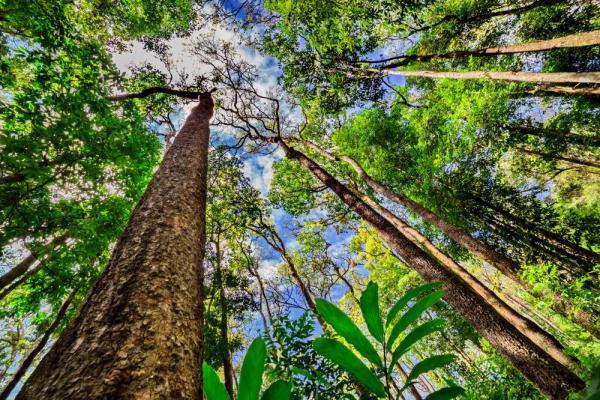In today’s critical environmental moment, humanity is pushing the planet to the edge of extinction. For example, in just 208 days of 2022, humanity exhausted the natural resources available for the entire year. On Amazon Day, we bring you five compelling reasons to protect the Amazon region, demonstrating why it is vital to act now:
1. Home to Thousands of Species
The Amazon rainforest is one of the most biodiverse places on Earth, home to an astonishing variety of flora and fauna. According to the Instituto Sinchi, the Colombian Amazon alone hosts over 3,798 species of fauna and more than 17,531 species of flora. These numbers showcase the incredible ecological richness of this region.
Such biodiversity is essential not only for maintaining ecological balance but also for scientific discoveries, such as new medicines and sustainable resources. Losing these species would mean losing potential solutions to global health and environmental challenges.
2. A Refuge for Endangered Species
The Amazon provides critical habitats for many endangered species, including river dolphins and jaguars. These species face numerous threats such as illegal mining, agricultural expansion, overfishing, hunting, and deforestation.
Protected areas in the Amazon create biological connectivity networks, enabling these species to survive and thrive. For instance, jaguars, often considered “umbrella species,” protect numerous other species indirectly due to their ecological role. Without their habitats, the survival of countless interconnected species is jeopardized.
3. Mitigating the Climate Crisis
Although the Amazon may seem remote to those living in urban areas, it plays a direct role in global climate regulation. Often referred to as the “lungs of the Earth,” the Amazon stores vast amounts of carbon, helping mitigate climate change. Its dense forests absorb carbon dioxide, acting as a buffer against global warming.
Moreover, the Amazon generates “flying rivers”—streams of water vapor in the atmosphere—that influence rainfall patterns across the region. These atmospheric phenomena are crucial for maintaining regional and global weather stability. For Andean-Amazonian countries, the interaction between mountain ranges and forests shapes biodiversity and climate patterns.
4. Protected Areas Combat Climate Change
Protected areas in the Amazon are crucial for helping both nature and communities adapt to climate change. These zones maintain the health and integrity of ecosystems, ensuring connectivity and resilience against extreme climatic events. Additionally, they provide vital ecosystem services such as clean water, food, and protection from natural disasters.
Colombia’s Amazon region exemplifies this importance with seven national parks, two natural reserves, and unique sites like the Flora and Fauna Sanctuary Isla de la Corota and the Ramsar site La Cocha. These areas safeguard biodiversity while also supporting sustainable development initiatives.
5. Its Richness Is at Risk
The Amazon is facing unprecedented threats. Activities such as agriculture, livestock farming, mining, infrastructure development, and hydroelectric dam construction are putting its ecosystems in jeopardy. Even with the existence of protected areas, deforestation continues to erode the rainforest, with devastating consequences for both local communities and global ecosystems.
The loss of Amazonian forests directly impacts biodiversity, climate regulation, and indigenous cultures. Immediate action is needed to halt deforestation and implement sustainable practices to preserve this irreplaceable region.
What Can Be Done?
Protecting the Amazon requires collective effort from governments, organizations, and individuals. Here are a few ways to contribute:
- Support Reforestation Projects: Investing in reforestation helps restore damaged areas of the Amazon.
- Promote Sustainable Practices: Encourage industries and communities to adopt eco-friendly methods that minimize environmental impact.
- Empower Indigenous Communities: Indigenous peoples are the stewards of the Amazon. Supporting their rights and initiatives ensures the forest’s protection.
- Reduce Carbon Footprints: Individual actions, such as reducing consumption and waste, contribute to global conservation efforts.
- Advocate for Policy Changes: Push for stricter regulations against deforestation and illegal activities harming the Amazon.
The Time to Act Is Now
The Amazon is more than a forest—it’s a lifeline for the planet. Its preservation is essential for biodiversity, climate stability, and the well-being of future generations. These five reasons illustrate why the Amazon’s protection is not just a regional concern but a global imperative. By acting together, we can safeguard this natural wonder and its invaluable contributions to life on Earth.
